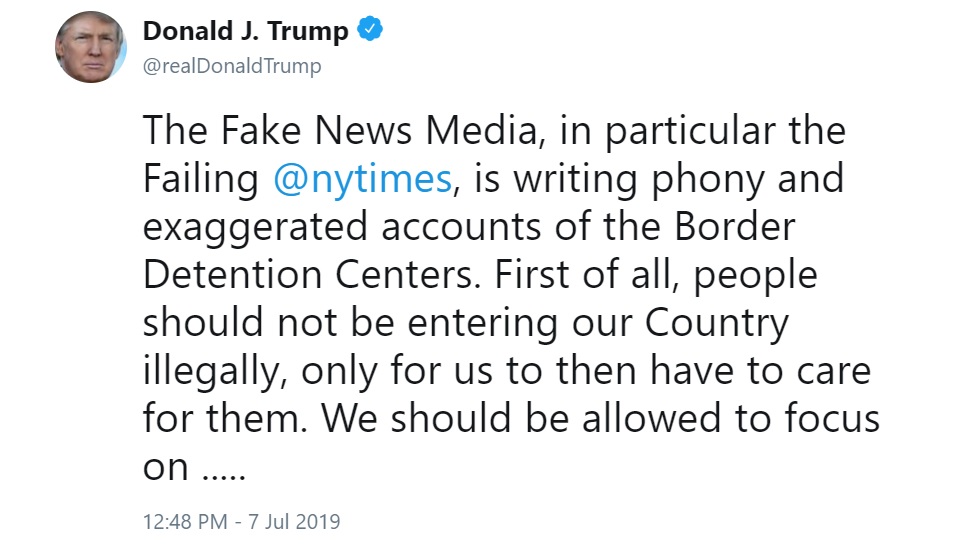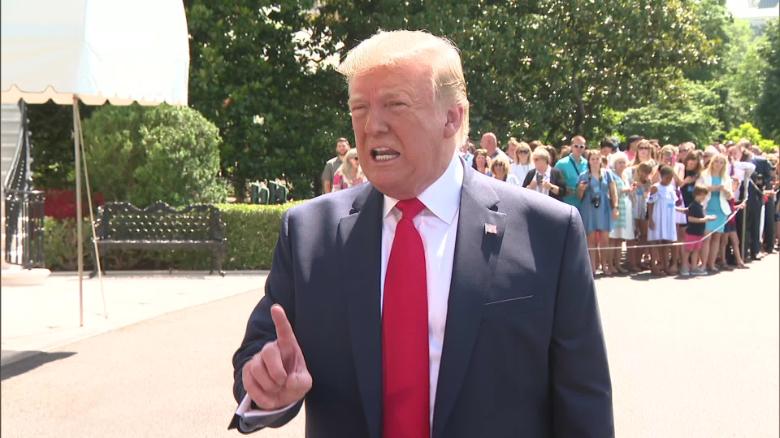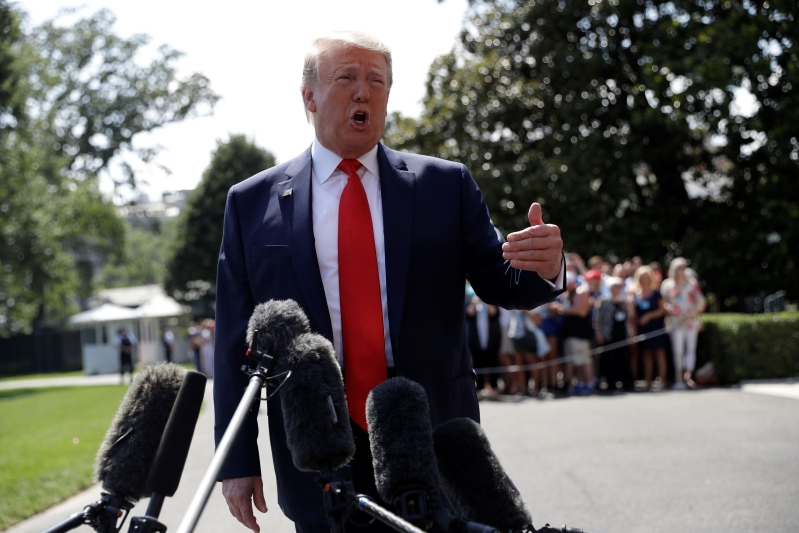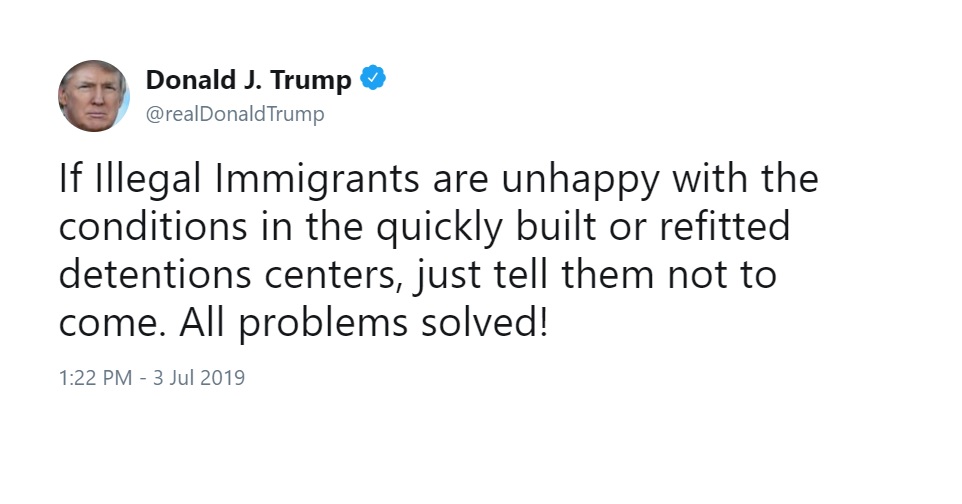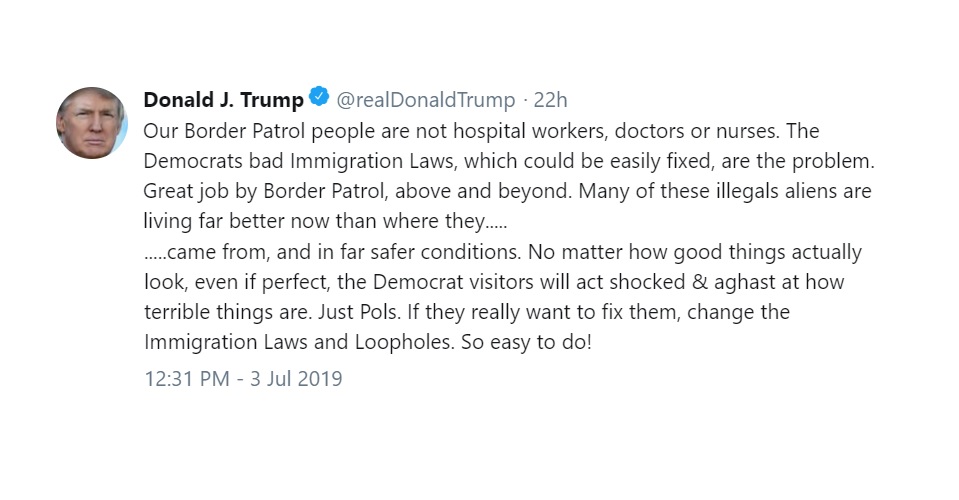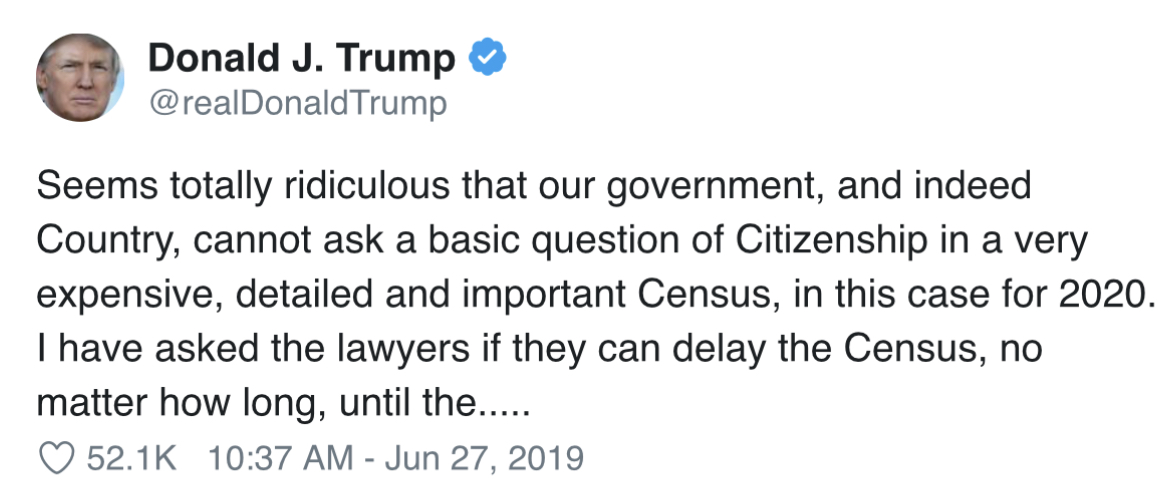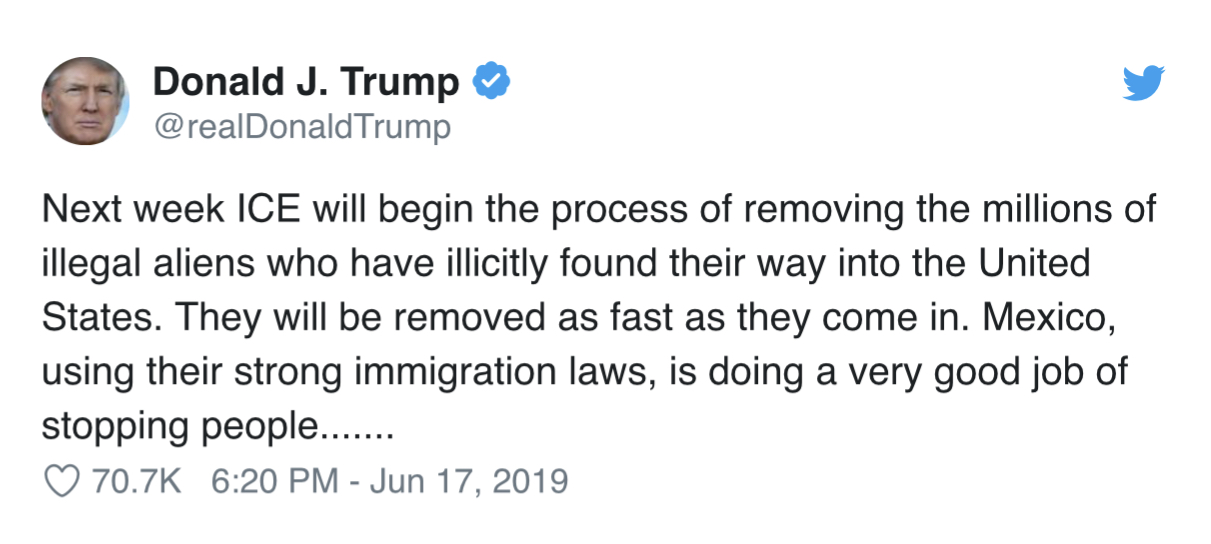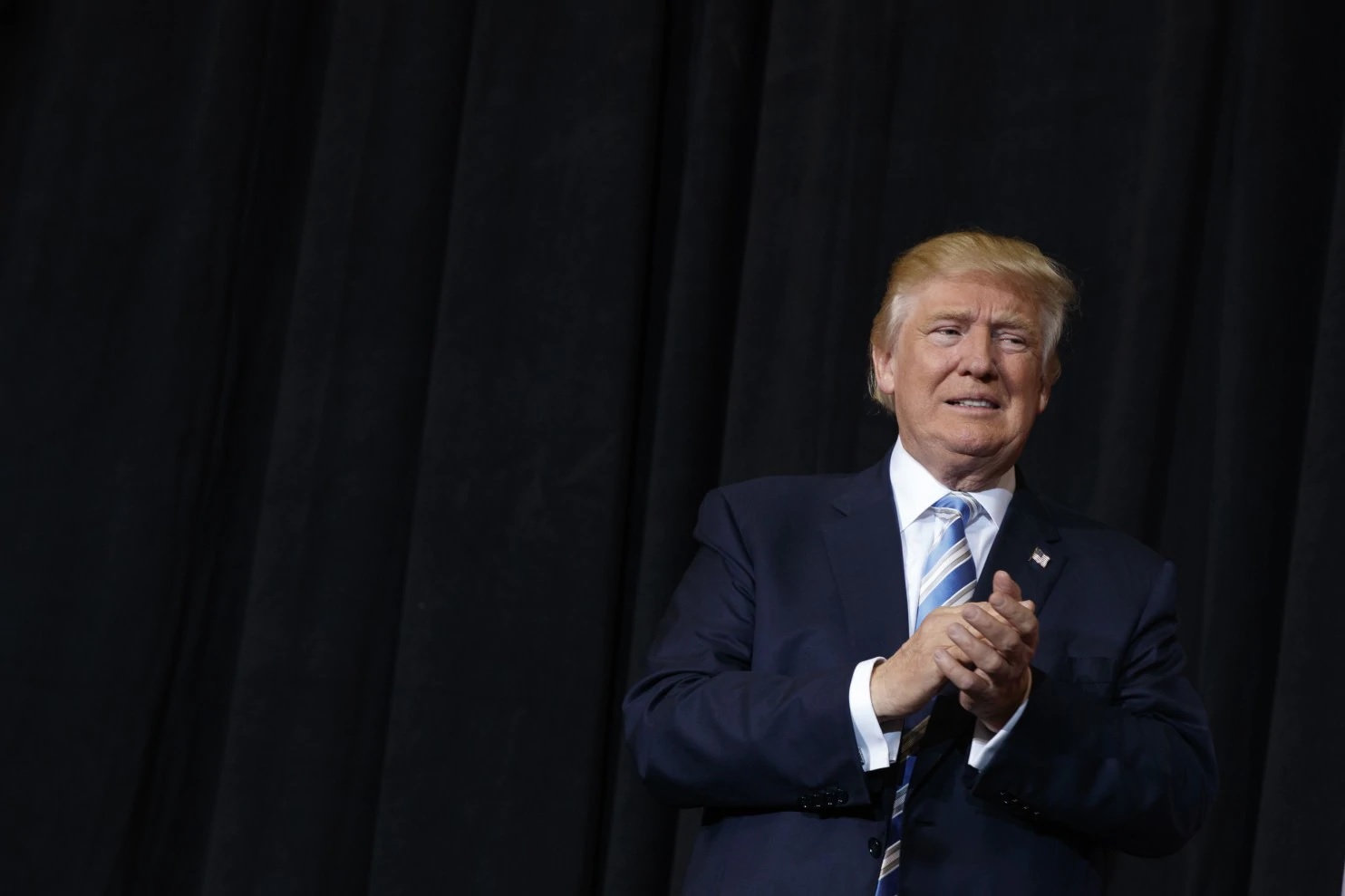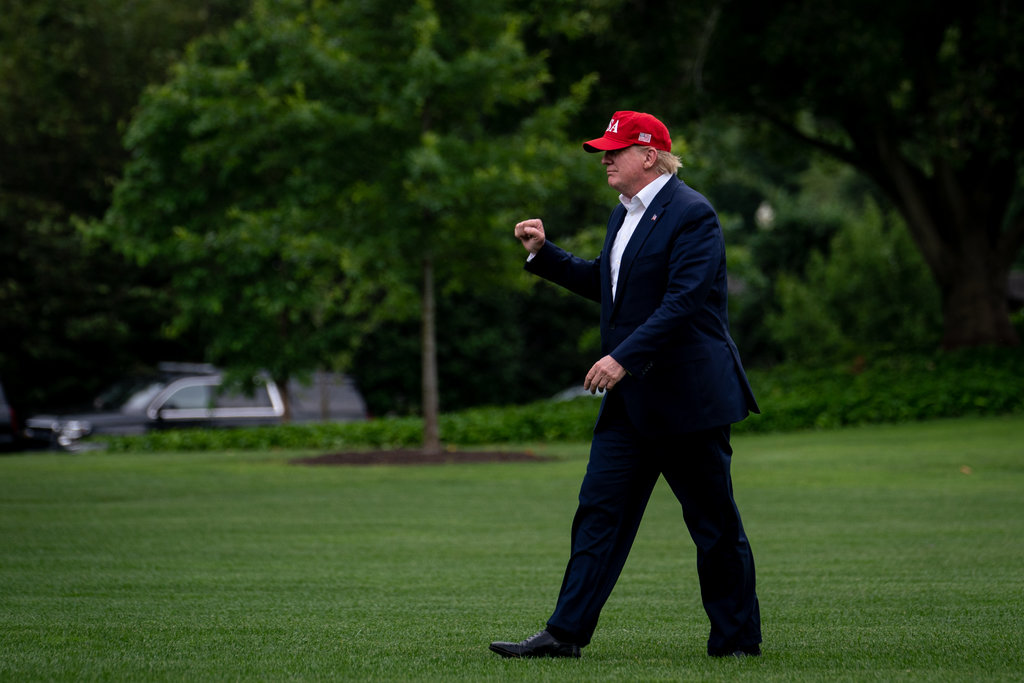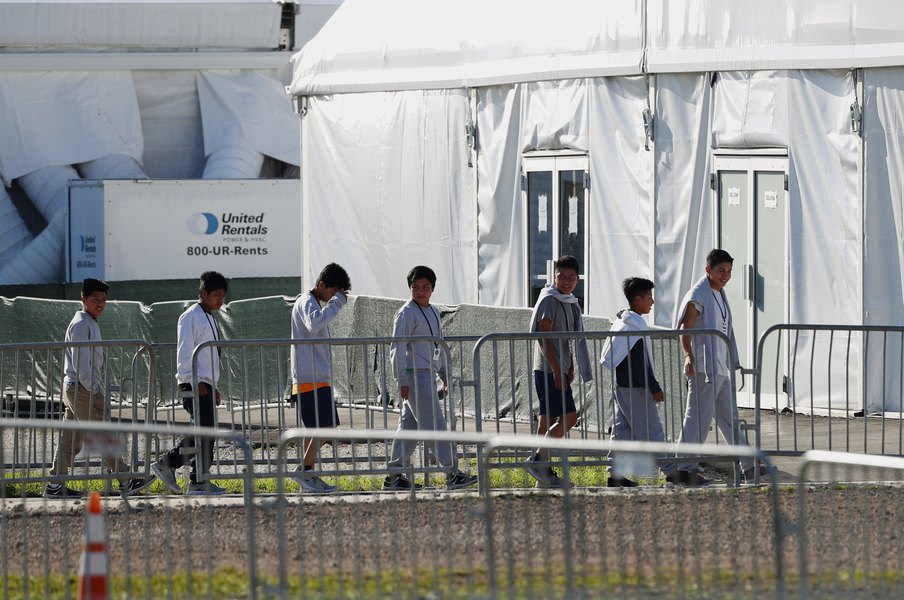The deal to avert tariffs that President Trump announced with great fanfare on Friday night consists largely of actions that Mexico had already promised to take in prior discussions with the United States over the past several months, according to officials from both countries who are familiar with the negotiations.
Friday’s joint declaration says Mexico agreed to the “deployment of its National Guard throughout Mexico, giving priority to its southern border.” But the Mexican government had already pledged to do that in March during secret talks in Miami between Kirstjen Nielsen, then the secretary of homeland security, and Olga Sanchez, the Mexican secretary of the interior, the officials said.
The centerpiece of Mr. Trump’s deal was an expansion of a program to allow asylum-seekers to remain in Mexico while their legal cases proceed. But that arrangement was reached in December in a pair of painstakingly negotiated diplomatic notes that the two countries exchanged. Ms. Nielsen announced the Migrant Protection Protocols during a hearing of the House Judiciary Committee five days before Christmas.
And over the past week, negotiators failed to persuade Mexico to accept a “safe third country” treaty that would have given the United States the legal ability to reject asylum seekers if they had not sought refuge in Mexico first.
Mr. Trump hailed the agreement anyway on Saturday, writing on Twitter: “Everyone very excited about the new deal with Mexico!” He thanked the president of Mexico for “working so long and hard” on a plan to reduce the surge of migration into the United States.
It was unclear whether Mr. Trump believed that the agreement truly represented new and broader concessions, or whether the president understood the limits of the deal but accepted it as a face-saving way to escape from the political and economic consequences of imposing tariffs on Mexico, which he began threatening less than two weeks ago.
Having threatened Mexico with an escalating series of tariffs — starting at 5 percent and growing to 25 percent — the president faced enormous criticism from global leaders, business executives, Republican and Democratic lawmakers, and members of his own staff that he risked disrupting a critical marketplace.
After nine days of uncertainty, Mr. Trump backed down and accepted Mexico’s promises.
Officials involved with talks said they began in earnest last Sunday, when Kevin K. McAleenan, the acting secretary of homeland security, met over dinner with Mexico’s foreign minister. One senior government official, who was not authorized to speak publicly about the closed-door negotiations that took place over several days, insisted that the Mexicans agreed to move faster and more aggressively to deter migrants than they ever have before.
Their promise to deploy up to 6,000 national guard troops was larger than their previous pledge. And the Mexican agreement to accelerate the Migrant Protection Protocols could help reduce what Mr. Trump calls “catch and release” of migrants in the United States by giving the country a greater ability to make asylum-seekers wait in Mexico.
But there remains deep skepticism among some American officials — and even Mr. Trump himself — about whether the Mexicans have agreed to do enough, whether they will follow through on their promises, and whether, even if they do, that will reduce the flow of migrants at the southwestern border.
In addition, the Migrant Protection Protocols already face legal challenges by immigrant rights groups who say they violate the migrants’ right to lawyers. A federal judge blocked the Trump administration from implementing the plan, but an appeals court later said it could move forward while the legal challenge proceeds.
During a phone call Friday evening when he was briefed on the agreement, Mr. Trump quizzed his lawyers, diplomats and immigration officials about whether they thought the deal would work. His aides said yes, but admitted that they were also realistic that the surge of immigration might continue.
“We’ll see if it works,” the president told them, approving the deal before sending out his tweet announcing it.
On Saturday, Mike Pompeo, the secretary of state, said the government looked forward to reducing illegal immigration and making the border “strong and secure” by working with Mexico to fulfill the agreement.
Mr. Trump’s decision to use trade as a bludgeon against Mexico was driven in part by his obsession with stopping what he falsely calls an invasion of the country and in part by a desire to satisfy his core supporters, many of who have grown angry at his inability to build his promised border wall.
Many of his top advisers, including those who oversee his political and economic agendas, were opposed to the tariff threat. But the president’s ire is regularly stoked by the daily reports he receives on how many migrants have crossed the border in the previous 24 hours.
Mr. Trump’s top immigration officials had repeatedly warned the president that results from their work to curb the flow of migrants might not be evident until July, and urged patience.
But that effort became more difficult in May, when the numbers spiked to the highest levels of his presidency. During the week of May 24, 5,800 migrants — the highest ever for one day — crossed on a single day. That was quickly followed by a group of 1,036 migrants who were caught on surveillance cameras crossing the border en masse.
Mr. Trump later tweeted out the video, and the tariff threat soon followed.
Throughout the week’s negotiations, officials on both sides worried about what Mr. Trump would be willing to accept in exchange for pulling back on his tariff threat. That question hung over the talks, which were led one day by Vice President Mike Pence and included Mr. Pompeo and Mr. McAleenan.
Mexican officials opened the negotiations with the offer to deploy their new national guard troops against migrants, using a PowerPoint presentation to show their American counterparts that doing so would be a breakthrough in their ability to stop migrants from flowing north through Mexico, often in buses.
In fact, Mexican officials had already made the same promise months earlier when Ms Nielsen met in Miami with Ms. Sanchez and aides to Marcelo Ebrard, the Mexican foreign minister. The purpose of the meeting, according to people familiar with it, was to press the Mexicans to act faster.
Ms. Sanchez also told Ms. Nielsen that the Mexican government’s new national guard, which had been created just a month earlier to combat drugs and crime, would be redirected to the border with Guatemala, the entry point for most of the Central American migrants.
At the time, Ms. Nielsen and the other American negotiators referred to the Mexican promise as the “third border” plan because the Mexicans proposed creating a line of troops around the southern part of their country to keep migrants from moving north.
Mexicans had begun to follow the plan, but not quickly enough for the Trump administration, which said that only about 1,000 Mexican national guard troops were in place by May.
Friday’s agreement with Mexico states that the two countries “will immediately expand” the Migrant Protection Protocols across the entire southern border. To date, migrants have been returned at only three of the busiest ports of entry.
But officials familiar with the program said Saturday that the arrangement struck by the two countries last December always envisioned that it would expand along the entire border. What kept that from happening, they said, was the commitment of resources by both countries.
In the United States, migrants must see immigration judges before they can be sent to wait in Mexico, and a shortage of judges slowed the process. The Mexican government also dragged its feet on providing the shelter, health care, job benefits and basic care that would allow the United States to send the migrants over.
The new deal reiterates that Mexico will provide the “jobs, health care and education” needed to allow the program to expand. But the speed with which the United States can send more migrants to wait in Mexico will still depend on how quickly the government follows through on that promise.
Perhaps the clearest indication that both sides recognize that the deal might prove insufficient is contained in a section of Friday’s agreement titled “Further Action.”
One official familiar with the negotiations said the section was intended to be a serious warning to the Mexican government that Mr. Trump would be paying close attention to the daily reports he received about the number of migrants crossing the border. The official said that if the numbers failed to change — quickly — the president’s anger would bring the parties back to the negotiating table.
“The tariff threat is not gone,” the official said. “It’s suspended.”
[The New York Times]
